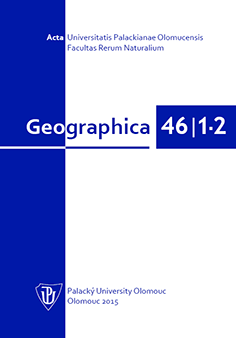Home >> Research >> Journal >> Geographica 46/1-2 >> Geographica 46/1-2 (2015)
Geographica 46/1-2 (2015)
|
Acta Universitatis Palackianae Olomucensis |
 |
| Back to contents | Zpět na obsah |
Changes in the health situation in the Czech Republic, Estonia and Slovenia during the transition period
Tomasz Michalski
Full text: ![]() PDF (1 MB)
PDF (1 MB)
Received: June 10, 2015
Accepted: June 26, 2015
Abstract
The paper analyses the health situation in three of the most developed countries created on the ruins of Czechoslovakia, Yugoslavia and the Soviet Union, namely: the Czech Republic, Slovenia and Estonia. The scope of the analysis comprises the period 1990–2013. The analysis uses five variables: the crude death rate per 1,000 population; estimated infant deaths per 1,000 live births; the difference in life expectancy at birth between females and males (in years); the incidence of tuberculosis per 100,000 population; the incidence of syphilis and gonorrhoea infections per 100,000 population. Typical methods of analysis have been applied: the arithmetic mean, the relative standard deviation, the Pearson product-moment correlation coeffi cient, the autoregressive model (for the coefficient of determination above 0.80). Similarities in the level and changes in the health situation were found between the Czech Republic and Slovenia, and a partly different course and level in the case of Estonia (this applies in particular to the crude death rate, the incidence of tuberculosis, the incidence of syphilis and gonorrhoea infections). All three analysed countries were very successful in their systemic transition, but Estonia had the hardest situation, which was reflected in the fact that initially some parameters defining the inhabitants’ health situation had deteriorated.
Key words
Central Europe, the Czech Republic, Estonia, Slovenia, health situation, autoregressive model
Last modified 21/11/16 | ↑ top